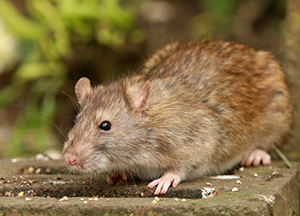|
Insensitive Pests Use Incredible Senses
By Dr. Stuart Mitchell
 Even with ongoing, cutting edge biological research, technological development, and integrated pest management practices, commensal rodents have survived within pestiferous proximity. As insensitive pests, rodents use incredible senses enabling astonishing environmental adaptation and survival through exploitation of human endeavors.
Even with ongoing, cutting edge biological research, technological development, and integrated pest management practices, commensal rodents have survived within pestiferous proximity. As insensitive pests, rodents use incredible senses enabling astonishing environmental adaptation and survival through exploitation of human endeavors.
Incredible Smell
Smell is one of the keenest and most critical senses. Both objects and pathways to and from food sources are marked. Individuals that are ready to mate differentiate between members of their colony and strangers. Strangers are determined to be weak or strong.
Incredible Hearing
Hearing is in the frequency range of 50 kHz (50,000 cycles per second) or much higher than the range for humans at 20 kHz. Keen hearing can locate objects within a few inches. High frequency utterances are made during behaviors such as mating (although poorly understood, ongoing research continues to decipher this communication).
Incredible Touch
Touch is highly developed through sensitive body hairs and vibrissae (well-innervated hair follicles). These bodily extensions are used to explore the environment. Movement within the explored that becomes the familiar is greatly reliant upon touch and smell. Stationary objects are preferred on at least one side as considerable travel is along walls (a key behavior when designing a control program).
Incredible Taste
Taste is highly developed, allowing detection of some chemicals down to concentrations of parts-per-million (ppm). Such a keen sense may cause bait shyness or rejection upon contamination of baits by certain chemicals. Service assurance of uninterrupted, fresh, and food-quality ingredients promotes
attraction and acceptance of quality rodenticide bait products.
Not-So-Incredible Vision
Vision is poor beyond three or four feet. Visual perception of motion is sensitive up to 30 to 50 feet away. Essentially color-blind, light-colored or reflective objects may stand out within the environment (may cause avoidance behavior or neophobia with sensitive animals).
Despite the rodents' keen senses, pest management professionals stop rodents in their tracks. Control techniques must be designed to eliminate infestations. Surviving animals can produce a population leading to re-infestation. Controls can be and non-chemical and chemical.
Incredible Non-Chemical Techniques
Non-chemical techniques can include live traps, snap traps, glue boards of various designs, and extended efforts such as habitat modification and structural inhabitant behavioral coaching. While effective, non-chemical techniques are usually complimented with rodenticides. The non-chemical technique of ultrasound has not been demonstrated to be effective.
Incredible Chemical Techniques
Chemical controls in the form of quality anticoagulant rodenticides are most effective. Anticoagulants are slow acting and therefore do not encourage bait shyness. Vitamin K1 (phytomenadione) is the specific antidote in cases of accidental exposure via ingestion. Bitter taste deterrents are often incorporated into rodenticides, decreasing the possibility of ingestion by people and non-target animals.
Incredible Ethical Pest Control
Ethical pest control must consider the humaneness of control techniques. Maintain a balance between non-chemical and chemical techniques to achieve infestation elimination.
|